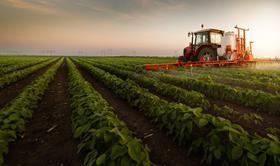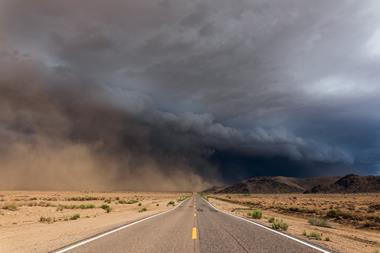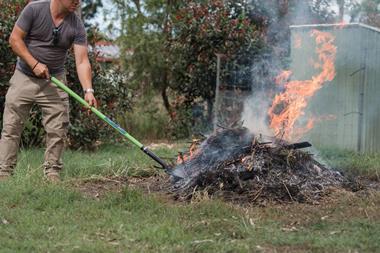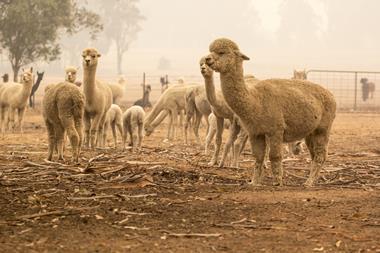It is pivotal that brokers have meaningful conversations with agricultural clients to ensure they understand farming’s operational risks
Major disease claims in the agricultural sector are escalating, creating losses of over a million pounds for farm owners and impacting the claims costs for insurers operating in this market, according to McLarens head of agriculture Steve Smout.
The majority of livestock insurance policies will cover disease. For example, Farm and General Insurance’s livestock proposition will pay out if policyholders’ livestock - such as sheep, cattle and pigs - experiences anthrax, Aujeszky’s disease, brucellosis, European swine fever, foot and mouth, Maedi Visna, swine vesicular disease and tuberculosis reactor.
Smout explained that a key driver behind the rising number of disease claims for livestock boils down to UK and global livestock farms evolving into large-scale, intensive production units as the demand for food increases.
For example, in the lead up to 2050, the world’s hunger for nourishment is expected to grow between 35% and 56%, according to a study by the International Institute for Applied Systems Analysis (IIASA), published in July 2021.

Changing climate patterns are also contributing to the uptick in disease claims.
Although insurance covering disease in livestock or flocks is widely available, Smout said there is one prominent issue impacting the efficiency of these policies.
“Cover is often based on traditional wording dating back to the 60s and 70s and often does not properly reflect or cover the farmer for losses experienced nowadays,” Smout explained.
“Although efficient and well managed, with high welfare standards, [large-scale intensive farming units] are more exposed to a number of different risks due [to] the fact that livestock and poultry will generally be housed or [kept] in densely populated corrals and holding areas.
“Given the increased size of many livestock units, a major disease outbreak can be very costly and, as such, disease is an issue that is increasingly front of mind for agricultural insurers.”
However, Ben Harrison, regional director of broker The Marches at Marsh Commercial, denied seeing this trend around rising claims for livestock disease.
Instead, he has “noticed a greater engagement and concern from farms [that] want to understand the cover available to them”. He believes this “wake-up call” was triggered by a false alarm of an outbreak of foot and mouth disease in Norfolk last month (June 2022).
Marsh Commercial has around 4,000 farming clients across the UK.
Climate impact
Insurers are also closely monitoring how climate change will affect livestock disease claims. For example, birds’ migratory patterns are likely to adapt, which could see avian flu spread to previously low risk areas.
“Late autumn and spring tend to be the riskiest times for poultry farmers, particularly near migratory sites,” said Smout.
Heatwaves also threaten livestock, as heat stress can increase their vulnerability to disease, reduce fertility and lower milk production.
Rural specialist insurer NFU Mutual confirmed that it expects to see changes in disease claims moving forward as it monitors weather patterns.
Operating practices
Harrison, meanwhile, said that “change is a precursor to risk” too, referring to the implementation of new farming methods, as well as new entrants starting out in the farming industry.
He continued: “Cleaning and disinfecting will bring challenges from an operational and legal perspective [as well].
”Once birds have been culled and the initial cleaning [is] done, farm owners will need to provide the Animal and Plant Health Agency (APHA) with a decision on whether they will clean and disinfect according to the European Union or World Organisation for Animal Health standards, or whether they will simply close the doors for 12 months.”
Harrison added that farms investing in renewable energy, such as solar farms and anaerobic digestion (AD) plants, alongside running their usual farm operations, will increase footfall to their premises and, in turn, increase the risk of contamination.
“One of the Department for Environment, Food and Rural Affairs’ (Defra) key aims is to prevent environmental harm, protect biosecurity and protect animal welfare. This will be challenging for farmers as they combine new technologies with a different way of working and by throwing inexperienced farmers into the mix, there is potential for risk to increase for insurers as businesses relearn how to modernise farming,” he explained.
Preventative steps
Smout said that well designed, maintained and ventilated buildings are increasingly necessary on farms, particularly for intensive pig and poultry units.
Harrison, meanwhile, noted that due to farms diversifying, “it will be important for brokers to understand operational risk through meaningful conversations [with clients]”.
For example, if a farm has invested in an AD plant on-site, but there is a foot and mouth outbreak at a neighbouring farm, contingency planning and opportunities around risk transfer must be reviewed.
Harrison continued: “Crucially, brokers should be working with specialist insurers to add discipline around all parties understanding and agreeing the small print, which is usually focused around the biosecurity plan, cleaning and building maintenance, control of visitors and vehicles [and] controlling pests and wildlife, including minimising contact with wild birds to reduce the risk of rodents.”
Amid the risks posed by climate change and new farming operations, disease impacting livestock will always be an important consideration for those within the agricultural sector because the resultant ramifications can be more widespread than the general public may assume.
Harrison said: “[Around] 21 years ago, [during the 2001 foot and mouth outbreak,] infections led to the culling and destruction of more than six million cattle, sheep and pigs, [the] restricted movement of people, cancelled events and even a delayed general election – ultimately destroying livelihoods and costing the UK economy more than £7bn.”
Hosted by comedian and actor Tom Allen, 34 Gold, 23 Silver and 22 Bronze awards were handed out across an amazing 34 categories recognising brilliance and innovation right across the breadth of UK general insurance.




















































No comments yet